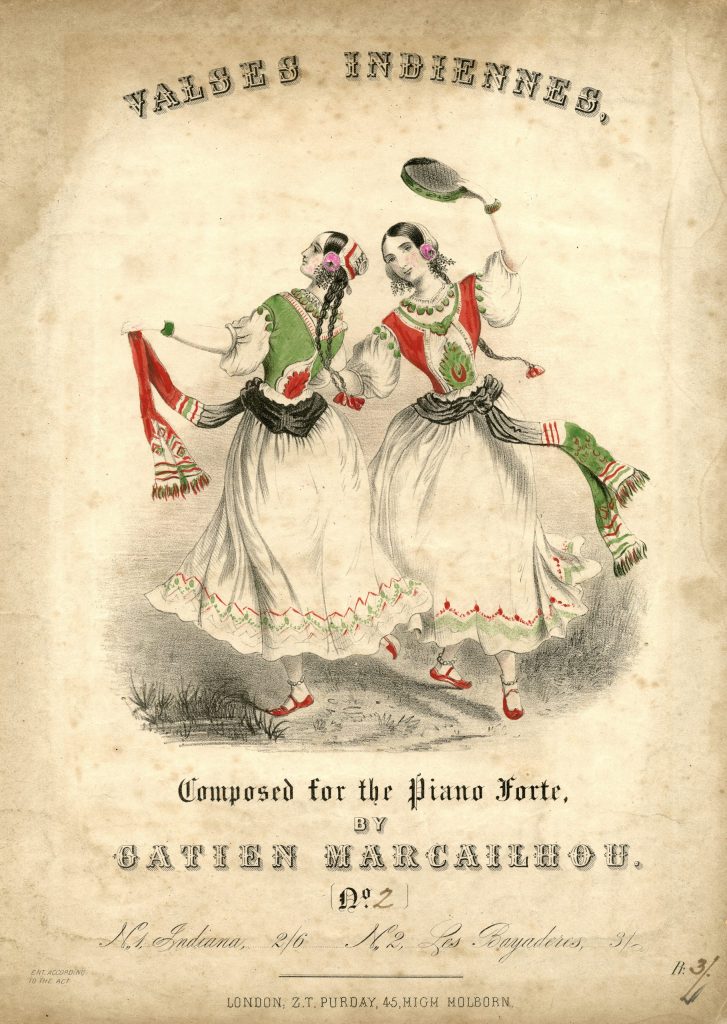Museum der Figuren. Einst und Anderswo
Amanda Piña
Einst und Anderswo: Danse Indienne

For my contribution to the ‘museum of gesture’ and the proposition of re-staging a dance, I chose as a starting point a picture of „valse indienne”, ilustrating the cover of a partition composed by french musician Gatien Marcailhou (1830). The picture was representing a fiction, a valse performed by south American ‘indios’? What could this be? A cultural crossbreed? A sincretism?
Considering how the other is seen and interpreted in dance through history, I researched on the trajectory the music and dance of Marcailhou’s Valse could have followed as introduced in the southern edge of the American Continent.
In Spanish the words Traducción = Translation and Traición = Betrayal, have a similar sound.
Here is what I found out in my research: In 1830 the ship HMS Beagle under the command of captain Robert Fitz-Roy came back to England after exploring Patagonia for the first time. On board was a young Fuegian from the Yagan or Yamana people of the island around Tierra del Fuego in modern Chile. His name was Jemmy Button, and he became a celebrity of his time. The English had given him the name Jemmy Button, because Captain Fitz-Roy exchanged him to his mother for a pearl button before being embarked and taken to England. The Indio boy was educated in the manners of ‘civilized’ courtship, he learned to dance Valse and was presented to court in 1830 when is said that he danced in front of the royal family. The plan was to teach the boy the christian faith among other tools of civilization he could bring back after into his ‘wild’ community. The indians where going to be brought back to Patagonia.
In my performance I re-staged the dance that Jemmy Button had possible learned in England and brought back to the Yamana people in the fiords Patagonia, a Valse that was now ‘indian’ and probably had been adapted to the new environment, translated or betrayed in order to be performed in the ceremonies of rites of passage celebrated by the Fuegians.
Sincretism is a form of subversive continuity of the opressed inside the imposed culture of the opressor. So my contribution then centred in the creation of this fantastic Valse Indienne that was imported from France via England to Tierra del Fuego.
The issues of colonization and appropriation nourished the performance. I performed a valse as seen by other culture and therefore propose a counter gesture: Instead of creating a fiction of other people, (volks), as usual and like on the cover of Marcailhou’s Music partition, the idea was to create a fiction of how European culture might be seen by the eyes of the Indians.